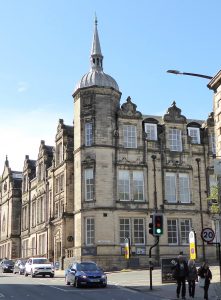
The LNU magazine, ‘Headway,’ was left out on a table at the Storey Institute, Lancaster
© Janet Nelson
Publicity was an essential tool for persuading public opinion to support the League of Nations, and the branches were vital channels for distribution. One of the Lancaster members, Mr A. Varley, made an apt remark at the 1931 AGM: ‘they could not do too much to keep the sentiment of peace before the world.’ Lancaster’s methods must have had an effect. Membership grew from 160 to 700 over a decade, and public meetings like the 1933 rally at Quernmore Park could attract hundreds of people.
Headquarters supplied posters and pamphlets for distribution, which had to be paid for. When delivered house-to-house, it provided an opportunity to talk to the householder. In 1931 the branch planned to deliver 10,000 circulars in this way to make local people aware of the Disarmament Conference at Geneva. Headquarters also provided ‘Headway,’ the LNU’s national journal, again at the branch’s cost, to each paid up member. Copies were placed in the Storey Institute in Lancaster, then housed at the Library. Sympathetic clergy delivered sermons containing League material. The Liberal supporting ‘Lancaster Guardian’ supported the LNU throughout the 1920s, publishing advertisments for public meetings and giving extensive column space for reports of AGMs, demonstrations, and well-known speakers, with frequent editorials in favour of the League. At demonstrations, the Lancaster LNU carried its own banner, with the well-known people in the executive parading in a procession behind it.
References/Further Reading:
Lancaster Guardian, 2 Apr 1931, 22 Apr 1922 & 4 Aug 1923.

